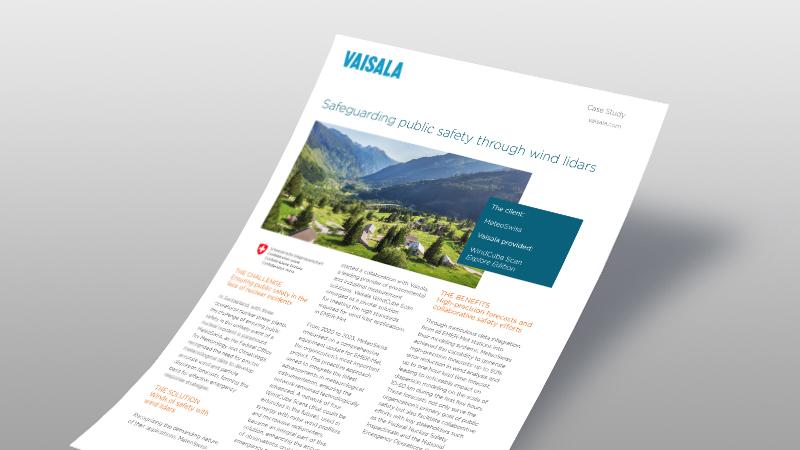Safeguarding public safety through wind lidars
The client: MeteoSwiss
Vaisala provided: WindCube Scan, Explore Edition
The challenge: Ensuring public safety in the face of nuclear incidents
In Switzerland, with three operational nuclear power plants, the challenge of ensuring public safety in the unlikely event of a nuclear incident is paramount. MeteoSwiss, as the Federal Office for Meteorology and Climatology, recognized the need for precise meteorological data to develop accurate wind and particle dispersion forecasts, forming the basis for effective emergency response strategies.
The solution: Winds of safety with wind lidars
Recognizing the demanding nature of their applications, MeteoSwiss started a collaboration with Vaisala, a leading provider of environmental and industrial measurement solutions. Vaisala WindCube Scan emerged as a pivotal solution for meeting the high standards required for wind lidar applications in EMER-Met.
From 2020 to 2023, MeteoSwiss embarked on a comprehensive equipment update for EMER-Met, the organization’s most important project. This proactive approach aimed to integrate the latest advancements in meteorological instrumentation, ensuring the network remained technologically advanced. A network of four WindCube Scans (that could be extended in the future), used in synergy with radar wind profilers and microwave radiometers, became an integral part of this solution, enhancing the accuracy of observations crucial for emergency preparedness.
The benefits: High-precision forecasts and collaborative safety efforts
Through meticulous data integration from all EMER-Met stations into their modeling systems, MeteoSwiss achieved the capability to generate high-precision forecasts: up to 50% error reduction in wind analysis and up to one hour lead time forecast, leading to noticeable impact on dispersion modeling on the scale of 10-50 km during the first few hours. These forecasts not only serve the organization's primary goal of public safety but also facilitate collaborative efforts with key stakeholders such as the Federal Nuclear Safety Inspectorate and the National Emergency Operations Centre.
The benefits of this comprehensive solution extend to the coordinated emergency response in the event of a nuclear incident. Accurate and timely information, made possible by advanced meteorological solutions, ensures that authorities can make informed decisions promptly. The collaboration with stakeholders ensures a unified response, emphasizing the role of MeteoSwiss as a leader in meteorological and climatological services for the safety and well-being of the Swiss population.

MeteoSwiss's approach to the challenge of ensuring public safety in the face of nuclear incidents, as exemplified by the EMER-Met project, highlights the importance of collaboration, technological innovation, and continuous improvement. The benefits, ranging from high-precision forecasts to coordinated emergency response efforts, underscore the organization's commitment to leveraging advanced meteorological solutions for the greater safety and well-being of the Swiss population.
"Windcube scans offer an efficient way to measure precise wind profiles over Switzerland."
Maxime Hervo, Scientific Collaborator, MeteoSwiss

